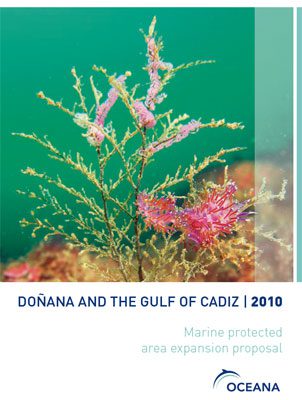Report | September 17, 2010
Doñana and the Gulf of Cadiz
For thousands of years, the Gulf of Cádiz has been known for its ecological importance, as seen in ancient clasical texts mentioning the abundance of its fisheries and the presence of numerous animal species. From the fantastic stories of Strabo, who defined tuna as the “pigs of the sea” because they would feed off the acorns that fell into the sea from the coastal oaks that extended past the Pillars of Hercules; to the documented production and commercialisation of “garum”, a fermented fish sauce made with salt, oil, vinegar, aromatic herbs and fish intestines.
The early establishment of Carthaginian factories put this area of the Atlantic on the map, thanks to the characteristics of the fisheries and the commercialisation of products, both of which gained international fame.
Though the growth of fisheries shed light on the diversity of species with commercial interest to humans, it offered only a glimpse into the total scope of marine species and, consequently, the ecosystems to which they belong.
Despite its importance, marine conservation is not a priority in this area.
One of the inconveniences of habitats and species protection has always been the lack of knowledge and attention paid to the marine environment, which is limited only to exploiting its commercial resources and maritime routes. As a consequence, this environment suffers from lack of protection in terms of surface area and its ecosystems are threatened and degraded. The studies developed in recent years have led to the discovery of the high rates of biodiversity in the Gulf of Cádiz; however, there is still an important lack of information, which becomes more severe as we move away from the coast. Coastal habitats are the subject of most studies, with particular emphasis on avifauna, the diversity of autochthonous dune species, rocky intertidal and sedimentary species, etc.
The published documents concerning the infralittoral and circalittoral areas are mainly focused on commercial species or describe the areas’ physical and geological characteristics. However, few published studies reveal the wide variety of flora in these areas, including various species of seagrass, such as Zostera spp. or Cymodocea nodosa, rhodophycean or phaeophycean algae, most described between Mazagón and the mouth of the Guadalquivir River.
Concerning fauna, we find commercial species such as the wedge shell (Donax trunculus) or the striped venus (Chamelea gallina), although there are high levels of diversity among molluscs and other marine fauna, as well. Species of crustaceans are described, such as the fiddler crab (Uca tangeri), cephalopods including the octopus (Octopus vulgaris), fish species such as the boyer’s sand smelt (Atherina boyeri) or the seahorse (Hippocampus hippocampus), as well as various annelid species. Apart from these species, cetaceans are also present in this area, including the bottlenose dolphin (Tursiops truncatus) or the harbour porpoise (Phocoena phocoena) and turtle species like the loggerhead turtle (Caretta caretta) or the green turtle (Chelonia mydas).
Samples taken by Oceana during the last three years have shown the presence of a wide variety of mulluscs and fish, as well as ascidians, holothurians, star fish, urchins, anemones, banks of mysids, copepods and different larvae. Various species of corals have also been identified atop dispersed slabs of sandstone, including Dendrophyllia ramea and Caryophyllia spp., gorgonians including Leptogorgia sarmentosa and Elisella paraplexauroides, as well as hydrozoans, bryozoans, sponges, tunicates, etc.
Overall, the area’s fishing sector is in trouble. The overexploitation of the fishing grounds in the Gulf of Cádiz, due to an excessively large fleet and effort, has made the situation unsustainable for the sector that operates here. In addition, destructive fishing activities or non-compliance to regulations have worsened the state of populations and habitats.
The main fleet in the Gulf of Cádiz uses trawl gear to target deep-water rose shrimp (Parapenaeus longirostris), as well as purse seine and small-scale gear, including dredgers or longlines. In terms of capacity, the trawl fleet is the most important and also the most aggressive with the ecosystem. However, in terms of number of vessels, the small-scale gear fleet takes the forefront and, excluding dredgers, may be the most respectful towards the environment and most relevant in socio-economic and ecological terms.
Oceana aims to stress the ecological importance of Doñana and the Gulf of Cádiz in general, proposing measures focused on their protection. Certain steps must be taken to achieve the conservation of marine ecosystems and the resources they provide including the creation of marine protected areas, like the proposal presented in this document, the development of in-depth scientific studies that shed light on the relevance of ecosystems, and effective management of fisheries.


